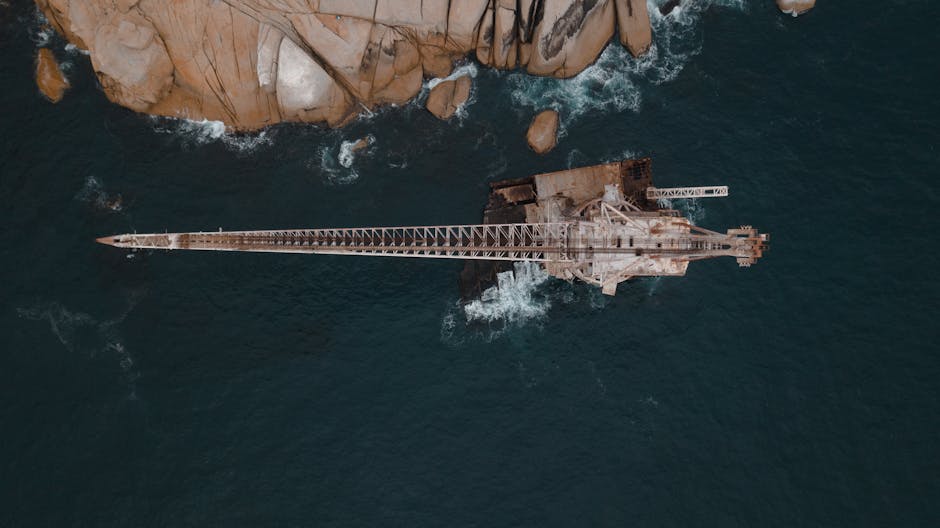The vast, mysterious oceans covering over 70% of our planet have long captivated human imagination and challenged our engineering capabilities. From the crushing pressures of the hadal zones to the corrosive effects of saltwater, marine environments present unique obstacles that require innovative solutions. Unlocking the secrets of the deep exploring marine engineering marvels reveals how human ingenuity has overcome these challenges to expand our understanding and utilization of oceanic resources.
The evolution of marine engineering
Marine engineering has progressed remarkably from primitive wooden vessels to today’s sophisticated underwater habitats and deep-sea exploration vehicles. This progression represents humanity’s persistent desire to conquer the final frontier on our planet.
The development of specialized materials has been crucial in this journey. Early marine structures struggled with rapid deterioration in harsh ocean environments. Modern engineering employs advanced alloys and composite materials that withstand extreme conditions. Metal gaskets, for instance, play a vital role in maintaining watertight integrity in deep-sea equipment, preventing catastrophic failures under immense pressure.
Consider how the simple concept of creating watertight seals has evolved. Traditional rope caulking has given way to precision-engineered metal gaskets that maintain their properties even at depths where pressure exceeds 15,000 pounds per square inch. These seemingly minor components enable the operation of everything from research submersibles to underwater drilling equipment.
Engineering for extreme environments
The ocean’s depth presents escalating challenges for engineers. Every 33 feet of descent adds another atmosphere of pressure, meaning structures at 3,000 feet depth must withstand pressures nearly 100 times greater than at the surface. How do modern vessels and equipment handle these conditions without immediate failure?
The answer lies in specialized design principles that distribute stress across structures. Spherical and cylindrical shapes predominate in deep-sea engineering because they naturally distribute pressure forces. Additionally, materials must maintain their properties under extreme conditions. Heat exchanger gaskets in deep-sea equipment, for example, must function perfectly despite experiencing temperature differentials that would cause standard materials to fail through thermal expansion or contraction.
Deep-sea operations also contend with corrosion from saltwater and biological growth. Advanced coatings and materials science developments have created surfaces resistant to both chemical breakdown and marine organism attachment. Some modern hulls employ biomimetic designs inspired by shark skin to reduce drag and prevent barnacle attachment, demonstrating how engineering sometimes finds its best solutions by imitating nature.
Submersibles and underwater vehicles
The development of human-occupied vehicles (HOVs) and remotely operated vehicles (ROVs) represents one of the most significant achievements in marine engineering. These sophisticated machines allow exploration of areas previously inaccessible to humans.

The Trieste bathyscaphe, which reached the Mariana Trench’s bottom in 1960, pioneered ultra-deep exploration. Its pressure sphere, built with walls over 5 inches thick, protected occupants from pressures exceeding 16,000 psi. Modern vehicles like the DSV Limiting Factor employ titanium pressure hulls and advanced viewport technologies that can withstand repeated trips to the deepest ocean points.
ROVs have transformed deep-sea research by removing human physical presence from the equation. These robotic explorers incorporate sophisticated thrusters, imaging systems, and manipulator arms for sample collection. Their sealed electronic systems rely on specially designed metal gaskets and pressure compensation systems to prevent implosion at depth. The interconnection of these components creates a system capable of withstanding extreme environments while maintaining precise operational capabilities.
Offshore structures and underwater habitats
Perhaps the most visible marine engineering marvels are the massive offshore platforms that extract resources from beneath the seabed. These structures represent extraordinary engineering achievements, with some weighing over 1 million tons and standing in waters nearly a kilometer deep.
The engineering challenges for these structures are immense. They must withstand hurricanes, tsunamis, and constant wave action while maintaining stable operations. Foundation designs range from gravity-based structures resting directly on the seabed to floating platforms anchored with sophisticated mooring systems.
Sealing systems in these environments face particular challenges. Heat exchanger gaskets in offshore processing equipment must maintain integrity despite constant thermal cycling and exposure to corrosive fluids. Engineers have developed specialized metal gaskets incorporating materials like Inconel and Monel that resist degradation while maintaining seal integrity even after years of continuous operation.
Unlocking deep ocean resources
Unlocking the secrets of the deep exploring marine engineering marvels has practical applications beyond scientific discovery. The ocean holds vast resources, from oil and natural gas to rare minerals and biological compounds with pharmaceutical potential.
Seafloor mining represents the frontier of marine resource extraction. Specialized equipment must operate at depths exceeding 5,000 feet to harvest polymetallic nodules and massive sulfide deposits. These operations rely on advanced hydraulic systems with specially designed sealing solutions. Metal gaskets in these applications must withstand not only extreme pressures but also abrasive particulates from mining operations.

Underwater pipeline systems transport resources across vast distances on the seafloor. These pipelines incorporate sophisticated joining techniques and monitoring systems to prevent environmental disasters. Heat exchanger gaskets in underwater processing stations maintain the flow of resources while preventing leakage into surrounding waters.
The future of marine engineering
As technology advances, marine engineers continue pushing boundaries of what’s possible in ocean environments. Developments in materials science, autonomous systems, and energy generation are expanding our capabilities beneath the waves.
New alloys and composite materials show promise for deeper exploration and longer-term underwater habitation. Graphene-enhanced materials may revolutionize pressure vessels by providing unprecedented strength-to-weight ratios. Similarly, advanced manufacturing techniques like 3D printing allow creation of complex geometries optimized for specific underwater applications.
You might wonder how we’ll power the next generation of underwater systems. Beyond traditional batteries and tethered power supplies, engineers are developing systems that harvest energy directly from the marine environment. Thermal gradient engines exploit temperature differences between deep and shallow waters, while current-driven turbines capture energy from ocean movements.
Artificial intelligence and machine learning are transforming how underwater systems operate. Autonomous underwater vehicles can now make complex decisions without human input, exploring underwater cave systems and mapping deep-sea features with minimal supervision. These capabilities require exceptionally reliable components, as equipment failures at extreme depths often mean complete loss of expensive assets.
The marine engineering marvels of tomorrow will likely incorporate biomimetic designs that adapt to changing conditions. Imagine submersibles that adjust their buoyancy and hydrodynamics automatically based on depth and current conditions, or structural materials that self-heal when damaged by pressure or corrosion.
Unlocking the secrets of the deep exploring marine engineering marvels represents one of humanity’s greatest technical achievements. From the specialized metal gaskets that maintain watertight integrity to the complex systems enabling human presence on the seafloor, each innovation builds upon a foundation of scientific understanding and engineering principles. As we continue pushing the boundaries of what’s possible beneath the waves, the ocean’s depths will yield not only scientific discoveries but resources and opportunities that benefit humanity’s future on our blue planet.

